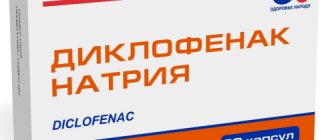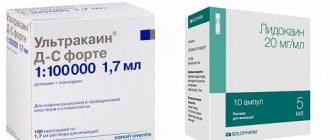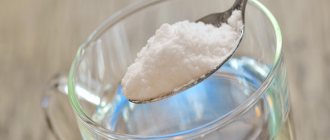From this article you will learn:
- reviews on Ultracain, release forms,
- pros and cons of the drug,
- How much does Ultracaine anesthesia cost?
The article was written by a dental surgeon with more than 19 years of experience.
The anesthetic Ultracaine is a drug in the form of an injection solution that has a very high analgesic effect when administered locally into tissues. The main active component of ultracaine is the substance “articaine hydrochloride” (Articaine), which makes it possible to classify this drug as an anesthetic of the articaine series. Ultracaine is most often used in dentistry, which is explained by its high efficiency.
There are several forms of release of this drug, which differ from each other in the concentration of the vasoconstrictor component (epinephrine) included in ultracaine. It is added to articaine to locally reduce blood supply in the anesthesia zone and reduce the leaching of the anesthetic from the tissues. Those. Epinephrine increases the duration and depth (strength) of anesthesia.
Anesthetic Ultracaine and carpule syringe –
For dentistry, the anesthetic is available both in the form of regular injection ampoules and special cartridges called carpules (these are most often used). The anesthetic carpule is inserted inside a special carpule syringe, which has a piston in the form of a handle, and a special double-edged needle is inserted into it from the side of the syringe nose. When pressing on the syringe piston, the latter presses on the movable rubber liner inside the carpule, which leads to an increase in pressure inside the carpule and the release of the anesthetic solution through the needle.
Ultracaine release forms –
- ultracaine DS-forte (epinephrine concentration 1:100,000),
- ultracaine DS (epinephrine concentration 1:200,000),
- ultracaine D (without epinephrine).
The presence of three forms of drugs is explained by the possible side effects of epinephrine, which can increase the patient's blood pressure. For completely healthy people who do not have cardiovascular or other diseases, Ultracain DS Forte is used. For moderately high blood pressure, Ultracaine DS with a reduced concentration of epinephrine can be used. However, the instructions for use for Ultracain indicate that any of the listed forms can be used from the age of 4 years. We will tell you more about the indications for use of each form below.
How anesthesia is performed in dentistry: video
Ultracaine: price of anesthesia
The cost of 1 carpule of Ultracaine is from 90 rubles (this is the price at which dental clinics purchase it). But in a dental clinic using Ultracain, the price for anesthesia will be approximately 400 to 500 rubles. Unfortunately, you won’t be able to buy a carpule of anesthetic at a pharmacy and bring it with you. This is strictly prohibited by law, because... In this case, the dentist cannot guarantee that the anesthetic is not counterfeit or that it was stored correctly. As a result, the dentist will in any case be to blame for the complications and will be held responsible for it.
Alcohol and anesthesia
Needless to say, alcoholic drinks have become a part of the lives of many people to a greater or lesser extent.
Drinking alcohol is a serious problem for many, and in this article we will look at the interaction of alcohol and anesthesia in dental treatment.
How does ethyl alcohol affect pain relief?
Dentists may encounter the problem that the patient drank an alcoholic drink before visiting the dental clinic and believes that nothing bad can happen and, naturally, does not inform the attending physician about this. But the use of ethyl alcohol before dental procedures is strictly contraindicated and here’s why:
- No one can guarantee that alcohol and the drug used will not interact in the body. From a medical point of view, ethyl alcohol and the anesthetic used are chemical substances that act on each other and give a general reaction to the body. What the reaction will be is unpredictable. Ethyl alcohol can both neutralize the effect of anesthesia and increase it.
- Of course, drinking alcohol before anesthesia for dental treatment is an excessive load on the liver, since the metabolism and breakdown of ethyl alcohol occurs in this organ, thereby complicating the work of the liver during dental treatment and, of course, after it.
It is worth understanding that after drinking alcohol, you may be denied treatment. This is primarily related to your own safety.
How dangerous is drinking alcohol after dental treatment?
It is clear that the effect of anesthesia will end and its products will leave the body, but many patients are concerned about the question: is it allowed to drink alcoholic beverages after visiting a dental clinic. Much depends on the time that has passed since treatment and on the complexity of the medical intervention. With minimally invasive treatment, such as installing a filling or grinding teeth for orthopedic treatment, the likelihood of negative consequences is not high and will be due to the presence of anesthetic in the patient’s blood. But after surgical interventions, drinking alcohol is under no circumstances recommended; firstly, the effect of the anesthetic after such complex interventions as the installation of implants will be longer, since several other substances are used, and secondly, ethyl alcohol can increase the possibility of bleeding, since it expands blood vessels. Thus, Dr. Grossmann’s dental specialists do not recommend drinking alcoholic beverages for two to three days after treatment to avoid bleeding.
Forms of release of the anesthetic Ultracaine -
Ultracaine: the composition, regardless of the release form, 1 carpool of anesthetic contains the anesthetic articaine 40 mg, and the volume of anesthetic solution in the carpul will be 1.7 ml. As for the content of epinephrine, as we said above, each of the three forms will have its own concentration of this vasoconstrictor component (vasoconstrictor). It should also be noted that ultracaine anesthetic contains the preservative sodium disulfite, which is designed to stabilize epinephrine in the drug. Moreover, since Ultracain D is produced without epinephrine, it will not contain preservatives.
Ultracaine DS forte (epinephrine 1:100.000) –
An excellent anesthetic for achieving a pronounced and long-lasting analgesic effect during surgical interventions in the oral cavity, for depulping teeth, etc. However, this form cannot be used for high blood pressure, severe cardiovascular diseases, thyroid disease and bronchial asthma.
For detailed instructions from the manufacturer, read: → Ultracain DS forte – instructions for use (PDF)
Ultracaine DS (epinephrine 1:200.000) –
The best option for use in patients at risk - pregnant and lactating women, patients with compensated cardiovascular diseases. It is undesirable to use for bronchial asthma. Cannot be used for thyroid diseases.
For detailed instructions from the manufacturer, read: → Ultracain DS – instructions for use (PDF)
Ultracaine D (without epinephrine) –
The optimal choice if there is a high risk of allergic reactions, because... This anesthetic is completely free of any preservatives that are necessary to stabilize anesthetics containing adrenaline. In this regard, it is a good choice also for patients with bronchial asthma. Due to the absence of adrenaline, it can be used for diseases of the thyroid gland. The absence of adrenaline allows its use in patients with severe cardiovascular disorders, but it must be taken into account that the duration of action of the anesthetic without epinephrine/adrenaline will be no more than 20 minutes.
For detailed instructions from the manufacturer, read: → Ultracain D – instructions for use (PDF)
- home
- >
- articles
Pain relief in permanent makeup.
Adverse reactions, complications, treatment tactics.
Ph.D.
Bezugliy A.V., permanent makeup school “Nautilus”, St. Petersburg Issues related to pain relief for permanent makeup have long been regularly discussed at conferences and specialized literature. Despite the short duration of the anesthesia procedure, which takes minutes, it is the most dangerous in terms of the severity of possible complications.
What factors should a permanent makeup specialist consider when choosing an anesthesia method:
- level of own professional qualifications and manual preparedness;
- the presence and properties of local anesthetics, the regulated procedure for their use;
- anamnestic data (allergy history);
- the client's health status (presence of renal and liver failure, circulatory failure, presence of cancer, nutritional disorders (hypoproteinemia), blood pressure level before the procedure, epilepsy or other seizures, etc.);
- correspondence of the duration of action of the selected anesthetic to the duration of the procedure.
Modern pharmacology offers a wide range of pain relief products in cosmetology. How to make the right choice, how to select a drug for a specific client, how to evaluate the effectiveness and predict the duration of anesthesia, what criteria are used to judge the complicated course of pain relief, etc.?
In an ideal situation, a local anesthetic should have low toxicity, a rapid onset of analgesic effect, a predictable duration of anesthesia, a small number of adverse reactions, low allergenicity, etc.
In order to choose the right drug for anesthesia, taking into account the individual characteristics of a particular person, a brief excursion into the course of pharmacology is necessary. Today, about 100 local anesthetics are used more or less actively in medical practice. Moreover, according to their chemical structure, they are all divided into esters (amino esters) and amides (amino amides). The first include novocaine (procaine), tetracaine (dicaine), benzocaine (anesthesin), etc., the second - lidocaine, trimecaine, pyromecaine, mepivacaine, prilocaine, articaine, bupivacaine, etidocaine, ropivacaine, etc. At the same time, promising modern local anesthetics are being developed today based on lidocaine, mepivacaine, articaine and bupivacaine, which are approaching ideal properties in their properties. The different chemical structures of the two groups of anesthetics determine differences in properties, such as toxicity, speed of onset and duration of anesthesia, allergenicity, etc.
Toxicity is inversely correlated with protein binding. The lower the binding of the anesthetic to plasma proteins and the lower the level of plasma proteins, the more pronounced the toxic effect of the drug.
The speed of onset and severity of pain relief are associated with the ability to diffusion - fat solubility. The more anesthetics dissolve in fats, the faster they cross the cell membrane of the nerve and are more effective.
The duration of anesthesia is also directly correlated with protein binding. The higher this indicator, the longer the anesthesia. In addition, the duration of anesthesia depends on the vasodilating properties of local anesthetics. Average “clinical” concentrations of a number of local anesthetics cause dilation of blood vessels, thereby accelerating the absorption of these drugs into the bloodstream and reducing the activity and duration of the analgesic effect. A comparatively more pronounced blood supply to the soft tissues of the face leads to the same effect.
Allergenicity. During metabolism, esters decompose to para-amidobenzoic acid, the substance that most often causes allergies. Amides do not reach this stage of metabolism, so they are much less allergenic. It should be noted that not only the breakdown products of local anesthetics cause allergic reactions, but also additional components used to stabilize anesthetic solutions in the external environment cause allergies.
Components of anesthesia drugs. Using the example of the drug Scandonest 2% SP from Septodont (France) (cited from Kononenko Yu.G., Rozhko N.M., Ruzin G.P., 2008), we can discuss the influence of various chemical compounds on the development of adverse reactions during anesthesia. Composition of the drug: mepivacaine hydrochloride, 36 mg (2% mepivacaine), adrenaline, 18 mg (adrenaline 1: 100000), potassium metabisulfate, 2.16 mg (antioxidant), methyl parahydroxybenzoate, 1.44 mg (methylparaben), propyl parahydroxybenzoate, 0. 36 mg (paraben), sodium chloride, 1.44 mg (buffer), water for injection up to 1.8 ml. At the same time, antioxidants (sulfites) prevent the oxidation of the vasoconstrictor. They can cause allergic reactions, provoke breathing problems, and an attack of bronchial asthma. Parabens (methylparabens) are antibacterial preservatives used in solutions of lidocaine and mepivacaine. They cause allergies more often than the anesthetic itself. Buffer – equalizes the pH of the drug to reduce pain during its administration. Vasoconstrictors (adrenaline, norepinephrine, vasopressin, felypressin) are added to the anesthetic to prolong and enhance the analgesic effect. The first three can cause a systemic reaction due to a general vasoconstrictor effect. Each of the components presented in the 2% Scandonest solution performs its necessary function, but some of them cause the development of adverse, toxic and allergic reactions.
Classification of anesthesia methods used in permanent makeup:
Terminal: - implies an effect on nerve endings located in intact skin and mucous membranes. The depth of penetration of drugs and the duration of anesthesia, as a rule, do not allow long procedures to be performed. Most often in practice, 10% lidocaine spray and eye drops are used.
Application:
- for intact skin (a high concentration of anesthetics is required, the use of “active” diffusion and a change in the normal barrier properties of the skin using penetrant substances and a number of other pharmacological techniques);
- for damaged skin (passive diffusion of anesthetics through damaged skin is possible; the combined use of “short” and “medium”, “medium” and “long” drugs and the addition of vasoconstrictors to lengthen the time of anesthesia are often used).
This is followed by injection methods of pain relief, the implementation of which is allowed with a higher medical education.
Infiltration: low concentrations of administered drugs are used, there are restrictions on the quantity and frequency of administration of anesthetics, and the use of vasoconstrictors is possible.
Conductor. It is characterized by the possibility of increasing the concentration of the active substance and reducing the volume of the drug, the need to administer the anesthetic at a distance of 2-3 mm from the nerve trunk, an increased risk of developing systemic complications, the importance of technical features - the premise of the solution and an aspiration test.
Characteristics of the drugs most commonly used for
topical anesthesia:
benzocaine (anesthesin, anestalgin) – 5-20% oil solution, 5-10% ointments and creams.
tetracaine – 0.5-2% solutions, creams, gels, ointments.
lidocaine – 5% gel, 2-5% ointment.
prilocaine – 2.5-8%.
infiltration anesthesia:
(the maximum single dose is presented in absolute numbers,
can also be calculated in mg/kg body weight)
novocaine – 0.5-1% solution (maximum single dose – 800 mg (800 ml of 1% solution)).
trimecaine – 1% solution (maximum single dose 1000 mg (1000 ml 1% solution)).
lidocaine – 0.5-1% solution (maximum single dose 200 mg (20 ml of 1% solution)).
conduction anesthesia:
containing 0.5% bupivacaine (vasoconstrictor - adrenaline 1: 200000):
- marcaine.
containing 4% articaine (without vasoconstrictor, adrenaline 1: 100,000 or 1: 200,000):
— ultracaine DS and DS forte;
— septanest 4% SP, N, SVC;
— ubistezin and ubistezin forte;
- alfacaine N and SP.
containing 2% and 3% mepivacaine (without vasoconstrictor, adrenaline
1 : 100000 or norepinephrine 1 : 100000):
— scandonest 2% SP, NA, SVC;
- mepivastezin;
— mepidont 3%.
containing 2% lidocaine (without vasoconstrictor, adrenaline 1: 50000,
1: 80000, 1: 100000 or norepinephrine 1: 25000):
— xylonor 2% NA, SVC;
— lignospan standard, forte and SP;
- xylostesin A.
Precautions to reduce the risk of adverse reactions during anesthesia:
1) Carefully read the annotation for the drug:
- name of the drug, active substance and additional components;
- permitted method of use (externally, intradermally, subcutaneously, intravenously, etc.);
- dosage in mg/kg body weight for various methods of administration;
- recommended exposure time for external use of the drug;
- combination with other drugs;
- features of use against the background of various diseases;
- contraindications for use;
- reported side effects;
- therapeutic breadth and signs of overdose, etc.
2) suitability of the drug for use:
- integrity of container and closure;
- the presence of clear inscriptions on the walls of the container or stickers;
- mandatory presence of a distinguishable release date and expiration date;
- uniformity of the dosage form;
- absence of sediment and foreign inclusions, etc.
3) Identification of allergies to the drug used:
- allergy history (not only to the commercial name of the drug, but also to its main components);
- performing an intradermal drug tolerance test should be carried out, incl. at your request in the treatment room of a medical institution or in laboratory services using the in vitro method;
- the presence of allergies (urticaria, Quincke's edema, anaphylactic manifestations, dermatitis, etc.) entails the inevitable cancellation of the entire group of “compromised” drugs (ether or amide) and replacing them with the opposite;
- In patients with a history of allergic reactions, drugs that do not indicate the active pharmacological substances should not be used.
Common complications of local anesthesia
- fainting is an acute vascular insufficiency with a short-term disturbance of blood circulation in the brain. The development is often gradual, accompanied by general weakness, dizziness, ringing in the ears, and nausea. Pale skin and cold sweat are noted. Full restoration of consciousness occurs within a few minutes.
- collapse - a more pronounced picture of acute vascular insufficiency, in which signs of a sharp decrease in blood pressure and peripheral circulatory disorders prevail;
- toxic reaction to anesthetic solution:
a) mild toxicity is accompanied by dizziness, tinnitus, and numbness around the mouth. Possible confusion, nausea, decreased blood pressure, increased heart rate, and slight respiratory depression.
b) with moderate severity, twitching of the facial muscles, generalized convulsions, vomiting, tachycardia, a pronounced decrease in blood pressure, and breathing problems are noted.
c) the clinical picture of severe toxic lesions is characterized by loss of consciousness, respiratory arrest, deep arterial hypotension, and cardiac dysfunction.
- allergic reaction (immediate hypersensitivity, delayed hypersensitivity);
- provoking an epileptic attack or other variants of convulsive seizures - the clinical picture is similar to a fainting state, but in addition, as a rule, convulsions, tongue biting, foam at the mouth, involuntary urination and defecation are observed;
- erroneous intravascular administration of the drug: inadvertent intravenous or intraarterial injection may lead to signs of systemic toxicity. Most often, signs of systemic toxicity are associated with symptoms of nervous system damage. When certain concentrations are exceeded, convulsive readiness increases, muscle twitching and clonic-tonic convulsions appear.
Local complications of injection anesthesia
- accidental damage to blood vessels may be accompanied by the formation of hematomas or external bleeding. More often, such complications occur in patients with slow blood clotting. Either due to blood diseases (hemophilia, deficiency of blood clotting factors), or in cases of taking antiplatelet agents and anticoagulants;
- Ischemia of facial areas can occur in cases of superficial subcutaneous administration of anesthetics containing vasoconstrictors. The areas of skin over the area of incorrect administration of drugs appear white due to their bleeding. The return of normal skin color occurs 1-3 hours after the injection;
- purulent-inflammatory complications - as a consequence of violations of asepsis rules during execution, develop within 2-3 days. First, edematous-infiltrative stages (inflammatory infiltrates) are observed, then they melt with the formation of abscesses and phlegmons. Less common are other forms of purulent-inflammatory complications, such as lymphadenitis, erysipelas, thrombophlephitis, etc.
- nerve damage, post-injection pain, persistent neuralgia: nerve injury with a needle and intraneural injection are the causes of the development of neuropathies and neuralgia, characterized by persistent pain in the nerve projection and paresthesia.
- violation of the technique of administering the drug with a fracture of the needle - lack of skills in performing the injection and sudden movements of a psychologically unprepared client can lead to a fracture of the needle with further migration of the needle fragment.
Anaphylactic Shock Emergency Kit
Mouth dilator, tongue holder, air duct, gastric tube, tourniquet, Ambu apparatus, blood transfusion systems, syringes of 1 ml, 2 ml, 5 ml, 10 ml, 20 ml, scalpel, tweezers, hemostatic clamp, sterile wipes, bandage.
Norepinephrine 0.2% - 1.0; adrenaline 0.1% - 1.0; ephedrine 5% - 1.0; cordiamine – 1.0; caffeine-sodium benzoate 10% - 1.0; korglykon – 0.06% – 1.0; hydrocortisone – 0.125; prednisolone – 0.3; dexamethasone – 0.004; saline solution in ampoules; aminophylline 2.4% - 10.0; no-shpa – 2.0; atropine (platiphylline) 0.1% - 1.0; calcium chloride (gluconate) 10% - 10.0; diphenhydramine 1% - 1.0; tavegil – 2.0; suprastin – 1.0; lasix 1% - 1.0; dibazol 2% - 2.0; ammonia – 1.0, ethyl alcohol. The supply of each drug is at least 5 ampoules. Reopolyglucin – 1 bottle, saline solution – 1 bottle.
The presented set of instruments and medications can only be completed in a medical institution because contains a number of group A drugs that require special storage conditions. In studios and beauty salons, this set can be presented in a shortened version. Providing assistance for anaphylactic reactions should be carried out by specialists with medical education, whose competence includes the necessary amount of knowledge, regardless of specialty.
Scope of first aid: stop the allergen, apply ice to the injection site, place the patient on his back with his legs raised, turn his head to the side, remove the dentures, extend the lower jaw and fix the tongue. Subcutaneously or intramuscularly inject 0.5 ml of a 0.1% solution of adrenaline, 1 ml of a 5% solution of ephedrine, provide access to fresh air or inhale oxygen.
First medical aid consists of intravenous drip administration of 1 ml of 0.1% adrenaline solution (1 ml of 0.2% norepinephrine solution) in 400 ml of 0.9% sodium chloride solution. With low blood pressure, the rate of drug administration is increased. 100 mg of hydrocortisone (90-120 mg of prednisolone), 1-2 ml of 1% diphenhydramine solution are administered intramuscularly or intravenously.
Various clinical variants of the course of anaphylactic shock (arterial hypotension, bradycardia, edema of the upper respiratory tract) require supportive and symptomatic therapy.
Modern drugs used for topical anesthesia:
Containing only amide preparations: 5% emla cream (lidocaine, prilocaine), anestop (prilocaine).
Containing ether and amide preparations: super trio (lidocaine, tetracaine, benzocaine), sustain (lidocaine, tetracaine), eyz-a-blue (lidocaine, tetracaine), prepcain (lidocaine, tetracaine), blue ice (lidocaine, tetracaine), meso numb (benzocaine, tetracaine, lidocaine), etc.
Upcoming courses in St. Petersburg:
https://www.pm2000.ru/services/
Ultracain: reviews from dentists
As a practicing physician, I try to use this particular anesthetic primarily, although its cost is 1.5-2 times more expensive than similar anesthetics based on articaine.
Thanks to the optimal composition, a minimum of preservatives in the composition (and the complete absence of preservatives in the form of Ultracaine D), this anesthetic can be used in all patients at risk (for cardiovascular, endocrine disorders, allergies, pregnancy and lactation). Ultracaine reviews from dentists are also as favorable as possible because this anesthetic will be a good choice if you have an allergic reaction to amide group anesthetics, for example Novocaine, Lidocaine and others. But in addition to the high safety profile, this anesthetic is also much stronger than its predecessors (see below). In addition, this anesthetic acts in inflamed tissues, but Novocain practically does not anesthetize in the presence of purulent inflammation.
The duration of action and depth of anesthesia will depend on the concentration of epinephrine in the composition of the product, for example, Ultracaine DS forte 1: 100,000 is the most powerful drug in the line. When conducting conduction anesthesia on the lower jaw, the duration of action averages from 2 to 3 hours. With infiltration anesthesia on the lower and upper jaws - a little more than an hour (24stoma.ru).
Ultracaine or lidocaine: which is better?
- Ultracaine is stronger than Novocaine - 5-6 times,
- more effective than lidocaine - 1.5-2 times.
Types of anesthesia
There are several methods in medicine; they differ in duration, effectiveness and location.
Conductor.
The most common type of local anesthesia in dentistry. Using a special needle, the drug is injected near the nerve trunk, blocking pain impulses that go to the brain. The injection is given in doses not exceeding a volume of 5 ml. To ensure a guaranteed result, the injection is placed at an angle of 90 degrees.
“Freezing” applies only to a certain group of teeth, in the place where the treatment will take place. After about 15 minutes, the medicine begins to work and the doctor can begin work.
The injection site can be additionally lubricated with lidocaine. If during the procedure the patient continues to feel discomfort, another dose may be administered.
Infiltration
It differs from the conductor only in the angle of the needle and the place of application. The drug is injected directly into the root apex area. This type is most effective for teeth and upper jaw. With infiltration anesthesia, you can “freeze” both a small area and a large surface of the oral cavity along with soft tissues.
Applique
This method is performed without a syringe. The dentist applies the necessary product directly to the diseased tooth and the soft tissues surrounding it using a cotton swab or fingers. Some doctors spray anesthetics using a special spray.
It is mainly used during simple and quick operations, since its effect is short-term and does not protect against severe pain. The result is stored for a maximum of 20 minutes. It is often used as the first stage before the injection “freezing” method.
Intraosseous
The dentist resorts to this technique much less often when other types of anesthesia have proven ineffective. An analgesic that is injected directly into the hard tissues between the teeth. The difficulty lies in the technique; to get to the bone, the doctor cuts the gum and drills a hole in it with a bur. This is the most effective method for quickly and permanently freezing the required area.
Intraligamentary
Its peculiarity is the high speed of injection, so numbness occurs almost immediately, but lasts only 20-30 minutes. The advantage of intraligamentary anesthesia in dentistry is that it acts directly on the tooth without touching the cheeks, lips and tongue. That is why the recovery process is much easier.
Ultracaine during pregnancy and breastfeeding
The optimal form of this anesthetic during pregnancy is Ultracaine DS with an epinephrine concentration of 1:200,000. The use of anesthetics without epinephrine (or adrenaline) in pregnant and lactating women is generally not recommended. This is due to the fact that adrenaline, by constricting blood vessels at the injection site, slows down the absorption of the main component (articaine) into the blood, and accordingly this will reduce the peak concentrations of articaine in the blood, and therefore its possible side effects on the fetus.
Ultracaine during breastfeeding - after anesthesia with Ultracaine, the content of articaine in breast milk is possible, but the concentration is so low that it cannot cause any harm. Therefore, there is no need to give up breastfeeding. The epinephrine content in Ultracaine DS is also very small and cannot adversely affect either the mother or the child.
Sources:
1. Dental education of the author of the article, 2. Based on personal experience as a dentist, 3. National Library of Medicine (USA), 4. “Local anesthesia in dentistry” (Baart J.), 5. https://dental.sanofi. de/.
Local anesthetics
Local anesthetics in dentistry include such well-known drugs as novocaine and lidocaine, as well as more powerful long-acting agents such as bupivacaine and etidocaine.
Typically, anesthetics are administered with adrenaline, since it significantly enhances the analgesic effect and increases the duration of anesthesia, but sometimes adrenaline is harmful (for example, it can provoke a panic attack). Anesthetics in dentistry without adrenaline (Ultracain D.S., Scandonest and others) are used in the following cases:
- with high blood pressure, tachycardia, arrhythmia, heart and vascular diseases, with VSD;
- with very strong anxiety (it is better to frankly admit this to the doctor, then, most likely, he will select an anesthetic without adrenaline);
- in women - during pregnancy, during PMS, during painful menstruation and menopause;
- as an alternative to conventional anesthetics (if you are allergic to them).
Instructions for use
To exclude or minimize intravascular administration of Articaine, an aspiration test is required before using the drug. An accurate and slow technique for injecting the drug is required with control of the pressure on the syringe plunger depending on the sensitization of the tissue.
The instructions for use in dentistry recommend using Articaine in a dosage corresponding to the nature of the manipulation:
- 1.7 ml of solution per tooth for uncomplicated extraction of the upper jaw tooth;
- 0.1 ml for anesthetizing incisions when creating a palatal depot and suturing;
- 0.5-1.7 ml per tooth for grinding teeth for crowns and in case of cavity preparation.
After each injection of Articaine, careful and constant monitoring of vital signs of the cardiovascular and respiratory systems (adequacy of ventilation) and the patient’s state of consciousness should be carried out.
using Articaine in dentistry for infiltration anesthesia during extirpation of mandibular premolars.







